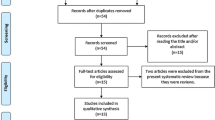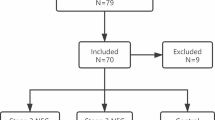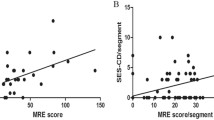Abstract
Purpose
This study aimed to evaluate the clinical utility of fecal calprotectin (FC) levels during the necrotizing enterocolitis (NEC) episode to predict the onset of post-NEC intestinal stricture.
Methods
The medical records of patients with NEC treated from April 2020 to April 2022 were recorded for this study. FC was quantified at the acute phase of NEC. FC levels were compared in patients with or without intestinal stricture. Receiver operating characteristics (ROC) analysis was constructed to determine optimal cut-offs of FC for post-NEC intestinal stricture.
Results
A total of 50 infants with NEC were enrolled in this study and 14 (28%) of them eventually developed intestinal stricture. All children with intestinal stricture underwent one-stage surgery and all made it through the follow-up period alive. The median FC level was 1237.55 (741.25, 1378.80) ug/g in patients with intestinal stricture and it was significantly higher than that in the non-stricture group [158.30 (76.23, 349.13) ug/g, P < 0.001]. FC had good diagnostic accuracy for predicting intestinal stricture, according to ROC curve analysis, with an AUC area of 0.911. At an optimal cut-off value of 664.2 ug/g, sensitivity and specificity were 85.71% and 91.67%, respectively.
Conclusion
As a non-invasive parameter, FC has excellent efficacy and accuracy in predicting post-NEC intestinal stricture. Increased FC levels at the acute phase of NEC were associated with the development of intestinal stricture.



Similar content being viewed by others
Data availability
The data supporting the findings of this study are available within the article, further inquiries can be directed to the corresponding author.
Abbreviations
- NEC:
-
Necrotizing enterocolitis
- FC:
-
Fecal calprotectin
- ROC:
-
Receiver operating characteristics
- PDA:
-
Patent Ductus Arteriosus
- CRP:
-
C-reactive protein
- PCT:
-
Procalcitonin
- PLT:
-
Plateletcrit
- WBC:
-
White blood cell
- Hb:
-
Hemoglobin
References
Nino DF, Sodhi CP, Hackam DJ (2016) Necrotizing enterocolitis: new insights into pathogenesis and mechanisms. Nat Rev Gastroenterol Hepatol 13(10):590–600
Alganabi M, Lee C, Bindi E, Li B, Pierro A (2019) Recent advances in understanding necrotizing enterocolitis. F1000Res 8:107
Hartman GE, Drugas GT, Shochat SJ (1988) Post-necrotizing enterocolitis strictures presenting with sepsis or perforation: risk of clinical observation. J Pediatr Surg 23(6):562–566
Jukic A, Bakiri L, Wagner EF, Tilg H, Adolph TE (2021) Calprotectin: from biomarker to biological function. Gut 70(10):1978–1988
Terrin G, Passariello A, De Curtis M, Paludetto R, Berni CR (2012) S100 A8/A9 protein as a marker for early diagnosis of necrotising enterocolitis in neonates. Arch Dis Child 97(12):1102
Campeotto F, Kalach N, Lapillonne A, Butel MJ, Dupont C, Kapel N (2007) Time course of faecal calprotectin in preterm newborns during the first month of life. Acta Paediatr 96(10):1531–1533
Reisinger KW, Van der Zee DC, Brouwers HA, Kramer BW, van Heurn LW, Buurman WA et al (2012) Noninvasive measurement of fecal calprotectin and serum amyloid A combined with intestinal fatty acid-binding protein in necrotizing enterocolitis. J Pediatr Surg 47(9):1640–1645
Phad N, Trivedi A, Todd D, Lakkundi A (2014) Intestinal strictures post-necrotising enterocolitis: clinical profile and risk factors. J Neonatal Surg 3(4):44
Walsh MC, Kliegman RM (1986) Necrotizing enterocolitis: treatment based on staging criteria. Pediatr Clin North Am 33(1):179–201
Houben CH, Chan KW, Mou JW, Tam YH, Lee KH (2016) Management of intestinal strictures post conservative treatment of necrotizing enterocolitis: the long term outcome. J Neonatal Surg 5(3):28
Heida FH, Loos MH, Stolwijk L, Te Kiefte BJ, van den Ende SJ, Onland W et al (2016) Risk factors associated with postnecrotizing enterocolitis strictures in infants. J Pediatr Surg 51(7):1126–1130
Gaudin A, Farnoux C, Bonnard A, Alison M, Maury L, Biran V et al (2013) Necrotizing enterocolitis (NEC) and the risk of intestinal stricture: the value of C-reactive protein. PLoS One 8(10):e76858
Schimpl G, Hollwarth ME, Fotter R, Becker H (1994) Late intestinal strictures following successful treatment of necrotizing enterocolitis. Acta Paediatr Suppl 396:80–83
Liu W, Wang Y, Zhu J, Zhang C, Liu G, Wang X et al (2020) Clinical features and management of post-necrotizing enterocolitis strictures in infants: a multicentre retrospective study. Medicine (Baltimore) 99(19):e20209
Burnand KM, Zaparackaite I, Lahiri RP, Parsons G, Farrugia MK, Clarke SA et al (2016) The value of contrast studies in the evaluation of bowel strictures after necrotising enterocolitis. Pediatr Surg Int 32(5):465–470
Zhang H, Chen J, Wang Y, Deng C, Li L, Guo C (2017) Predictive factors and clinical practice profile for strictures post-necrotising enterocolitis. Medicine (Baltimore) 96(10):e6273
Imai J, Hozumi K, Sumiyoshi H, Yazawa M, Hirano K, Abe J et al (2015) Anti-fibrotic effects of a novel small compound on the regulation of cytokine production in a mouse model of colorectal fibrosis. Biochem Biophys Res Commun 468(4):554–560
Aydemir G, Cekmez F, Tanju IA, Canpolat FE, Genc FA, Yildirim S et al (2012) Increased fecal calprotectin in preterm infants with necrotizing enterocolitis. Clin Lab 58(7–8):841–844
Yoon JM, Park JY, Ko KO, Lim JW, Cheon EJ, Kim HJ (2014) Fecal calprotectin concentration in neonatal necrotizing enterocolitis. Korean J Pediatr 57(8):351–356
Olafsdottir E, Aksnes L, Fluge G, Berstad A (2002) Faecal calprotectin levels in infants with infantile colic, healthy infants, children with inflammatory bowel disease, children with recurrent abdominal pain and healthy children. Acta Paediatr 91(1):45–50
Berni Canani R, Rapacciuolo L, Romano MT, Tanturri de Horatio L, Terrin G, Manguso F et al (2004) Diagnostic value of faecal calprotectin in paediatric gastroenterology clinical practice. Dig Liver Dis 36(7):467–70
Acknowledgements
The authors have no support or funding to report.
Author information
Authors and Affiliations
Contributions
Data acquisition and analysis: XL; Drafting of the manuscript: GC; Critical revision: WT. All authors reviewed the manuscript.
Corresponding author
Ethics declarations
Conflict of interest
The authors have declared that no competing interest exists.
Additional information
Publisher's Note
Springer Nature remains neutral with regard to jurisdictional claims in published maps and institutional affiliations.
Rights and permissions
Springer Nature or its licensor (e.g. a society or other partner) holds exclusive rights to this article under a publishing agreement with the author(s) or other rightsholder(s); author self-archiving of the accepted manuscript version of this article is solely governed by the terms of such publishing agreement and applicable law.
About this article
Cite this article
Chen, G., Lv, X. & Tang, W. Fecal calprotectin as a non-invasive marker for the prediction of post-necrotizing enterocolitis stricture. Pediatr Surg Int 39, 250 (2023). https://doi.org/10.1007/s00383-023-05534-7
Accepted:
Published:
DOI: https://doi.org/10.1007/s00383-023-05534-7




